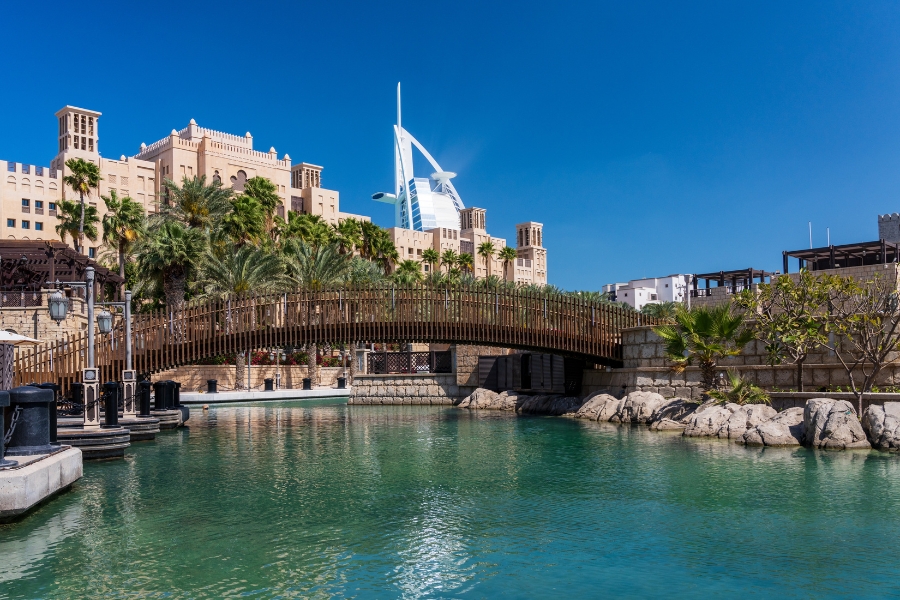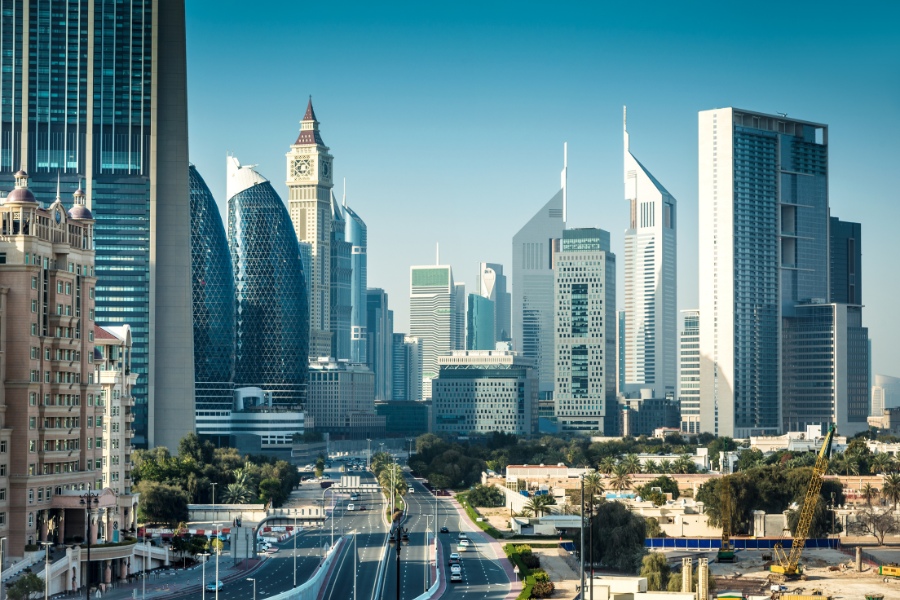Dubai’s real estate landscape is undergoing a seismic shift, with Properties for Sale in Dubai experiencing unprecedented demand that spills over into the rental sector. As the city attracts a record influx of expatriates and investors, the market for residential units has exploded, creating a ripple effect across all segments. In 2025, this surge has culminated in an astonishing 85% growth in rental prices over the past three years, leaving tenants scrambling to keep up with soaring costs. From compact studios in Jumeirah Village Circle to expansive family homes in Arabian Ranches, the availability of affordable housing is dwindling, forcing many to reconsider their long-term plans in this glittering metropolis.
The boom in Rental Properties in Dubai is not just a fleeting trend but a reflection of the city’s robust economic engine, fueled by tourism, trade, and technological innovation. With over 155,000 new residents added in 2025 alone, the pressure on the housing market has intensified, pushing average apartment rents to AED 75,317 in the third quarter—a staggering 6% year-on-year increase that pales in comparison to the cumulative 85% rise since 2022. This explosive growth, while a boon for landlords and investors eyeing Properties for Sale in Dubai, has shocked tenants who now face the harsh reality of a market where supply struggles to match demand. As Dubai cements its status as a global hub, understanding this rental revolution is crucial for anyone navigating the Emirates’ property scene.
Unpacking the 85% Rental Surge in Dubai

The 85% growth in Dubai’s rental prices over three years is a figure that demands dissection. Drawing from data by the Real Estate Regulatory Agency (RERA), this escalation began with a 21.1% annual spike in early 2024, moderated to 14.3% by January 2025, and settling at 8.5% by May 2025. Villas have seen a steadier climb of 5.7% year-on-year, while apartments lead the charge at 9.0%, reflecting the preferences of young professionals and transient workers flooding the city.
This isn’t mere speculation; it’s backed by tangible drivers. Dubai’s population boom, with a 5% increase in 2024 alone, has created a perfect storm. The Dubai Land Department (DLD) reported 137,700 rental leases in Q3 2025, totaling AED 12.7 billion, with hotspots like Nad Al Sheba and Jumeirah posting 28% and 23% gains respectively. For tenants, this translates to monthly bills that have doubled in some cases, turning what was once an affordable expatriate haven into a high-stakes affordability challenge.
Drivers Behind Dubai’s Rental Market Explosion

Several interconnected factors have propelled this rental frenzy. First, the UAE’s economic diversification under the Dubai Economic Agenda D33 has drawn multinational corporations, boosting white-collar migration. Sectors like fintech, logistics, and e-commerce have added thousands of jobs, each requiring housing solutions. The Golden Visa program’s expansion, offering long-term residency for investors in Properties for Sale in Dubai, has further amplified this, as many opt for rentals while scouting permanent buys.
Tourism’s resurgence plays a pivotal role too. With visitor numbers projected to hit 20 million in 2025, short-term Rental Properties in Dubai via platforms like Airbnb have surged 18%, converting long-term units into lucrative vacation stays. Infrastructure megaprojects, such as the Dubai Creek Tower and Expo City expansions, are drawing construction workers and executives, concentrating demand in adjacent neighborhoods. Add to this a lag in new supply—only 73,000 units expected in 2025 against 300,000 by 2028—and the stage is set for this shocking escalation.
Tenant Struggles: Real Stories from Dubai’s Rental Frontlines
The human cost of this boom is palpable in the stories of everyday tenants. Take Sarah, a British marketing executive who relocated to Dubai Marina in 2022. Her one-bedroom apartment, once AED 60,000 annually, now commands AED 110,000—a 83% hike that forced her to downsize. “It’s shocking,” she shares. “I love Dubai’s vibe, but these rents are pricing out the middle class.” Similar tales echo across forums and expat groups, where families in Al Barsha report 75% increases, pushing some to consider relocation to Abu Dhabi, where rents rose a milder 27.3% in May 2025.
For low-to-middle-income earners, the impact is devastating. The DLD’s Smart Rental Index, designed to cap increases at 20% for renewals, has been a lifeline, but new leases evade these caps, allowing market forces to run wild. Single professionals in Business Bay face studio rents jumping from AED 40,000 to AED 75,000, eroding savings meant for Properties for Sale in Dubai. This tenant shockwave risks a brain drain, as skilled workers weigh Dubai’s glamour against financial strain.
Opportunities for Investors in Dubai’s Rental Boom

Amid the tenant turmoil, investors are reaping windfalls. Gross rental yields have climbed to 6.7% citywide, with apartments at 7.3% and villas at 5.0%, per Cavendish Maxwell’s Q1 2025 report. Off-plan Properties for Sale in Dubai dominate, comprising 60% of sales, offering entry points like AED 800,000 units in Dubai South with projected 11% ROI. The mid-market boom, with transaction values up 15% to $36.6 billion in Q3 2025, signals diversification beyond ultra-luxury.
Smart investors are targeting high-yield pockets: Deira and Dubai Investments Park boast up to 48% rental growth and 11% returns, ideal for buy-to-let strategies. With 250,000 units slated for 2026-2027 delivery, early movers in Rental Properties in Dubai can lock in pre-boom prices, hedging against future stabilization. This boom underscores Dubai’s resilience, turning rental shocks into investor goldmines.
Government Interventions and Future Outlook
Dubai’s authorities aren’t idle spectators. The RERA’s rental caps and escrow mandates for off-plan sales aim to inject fairness, while the 2040 Urban Master Plan promises 300,000 new homes by 2028. Initiatives like affordable housing in Dubai South and rent-to-own schemes for Properties for Sale in Dubai target the squeezed middle. Yet, experts like those at Cushman & Wakefield predict moderation in 2026, with prime areas like Palm Jumeirah holding double-digit gains while mid-tier spots stabilize.
Looking ahead, a 5-8% price growth forecast for 2025 suggests sustained momentum, tempered by incoming supply. For tenants, relief may come via increased inventory, but for now, the 85% boom’s aftershocks linger. Policymakers must balance growth with inclusivity to sustain Dubai’s allure.
Navigating Luxury Villas in Dubai Amid the Rental Surge

As the rental market heats up, Luxury Villas in Dubai emerge as a resilient segment, offering stability for high-net-worth tenants and investors. In enclaves like Emirates Hills and The Meadows, villa rents have risen a more measured 7% year-on-year to AED 265,055 on average, but cumulative growth nears 50% since 2022—far from the apartment frenzy yet still impactful. These sprawling estates, with private pools and golf course views, attract executives and families fleeing urban squeeze, commanding premiums in Jumeirah Islands where annual gains hit 30.3%.
For landlords, Luxury Villas in Dubai promise 5-6% yields with lower vacancy risks, bolstered by the influx of ultra-high-net-worth individuals. Developments like Damac Hills 2 blend opulence with accessibility, starting at AED 2 million for sales, appealing to those upgrading from strained apartment rentals. This segment’s poise amid the boom highlights a bifurcated market: while mass rentals shock, luxury endures as a safe harbor.
Strategies for Tenants to Weather the Storm
Tenants aren’t powerless. Proactive moves like signing longer leases—two years—to lock in rates before hikes, or exploring emerging areas like Mudon with 5.1% villa rent growth, can mitigate pain. Co-living spaces in JLT offer shared savings, while negotiating with landlords using the Smart Rental Index caps renewals effectively. For those eyeing permanence, dipping into Properties for Sale in Dubai via flexible mortgages (up 9,388 transactions in Q1 2025) turns rental woes into ownership wins.
Budgeting tools from apps like Bayut track trends, and community bargaining in high-supply zones yields concessions. Ultimately, adaptability is key: many tenants are upskilling for higher salaries or relocating to Dubai’s outskirts, where growth lags at 6-7%.
The Investor Playbook in a Booming Rental Market

Investors must play strategically. Focus on high-ROI zones like Nad Al Sheba (+28% rents) for quick flips, or sustainable plays in Dubai Hills Estate with eco-villas yielding 6%. Diversify across apartments and Rental Properties in Dubai to buffer segment slumps, and leverage developer incentives like 50/50 payment plans. With Fitch’s ‘AA-‘ rating affirming stability, now’s prime for scaling portfolios.
Risks loom: oversupply post-2025 could cap yields, so timing entries via market dips is savvy. Yet, with 44% secondary market transactions, resale liquidity shines.
Why Property Agents in Dubai Are Lifelines in This Chaos
In this volatile arena, Property agents in Dubai emerge as indispensable guides. Their insider access to unlisted Rental Properties in Dubai and negotiation prowess can shave 10-15% off asking rents, turning shocks into savings. Agents decode DLD data, spotting undervalued gems in Al Barsha or JBR, and streamline viewings amid tight schedules.
For investors, they forecast yields with tools like TruEstimate, ensuring buys align with 7-11% returns. In a market where information asymmetry reigns, partnering with RERA-licensed pros isn’t luxury—it’s survival.
Conclusion: Dubai’s Rental Renaissance and What Lies Ahead
Dubai’s 85% rental boom shocks tenants but heralds a renaissance for the city’s real estate. Properties for Sale in Dubai and Rental Properties in Dubai underscore a market maturing amid explosive growth, balancing opportunity with urgency. As supply catches up by 2028, moderation beckons, but the trajectory points upward. For tenants, resilience; for investors, riches. Dubai endures as the ultimate playground—rent or own, the key is acting now.






Join The Discussion